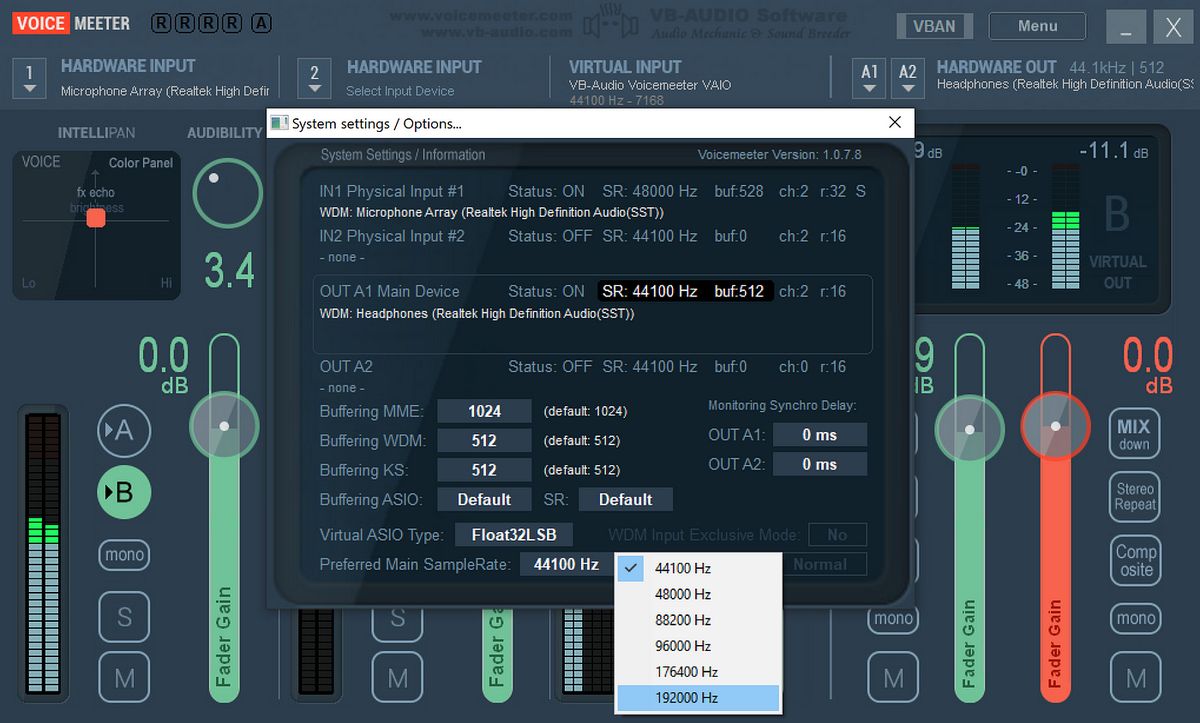Home>Production & Technology>Noise Cancellation>How Does Cvc Noise Cancellation Work


Noise Cancellation
How Does Cvc Noise Cancellation Work
Modified: January 22, 2024
Discover how noise cancellation technology works and understand its efficiency. Learn how CVC effectively filters out unwanted background noise for a better audio experience.
(Many of the links in this article redirect to a specific reviewed product. Your purchase of these products through affiliate links helps to generate commission for AudioLover.com, at no extra cost. Learn more)
Table of Contents
Introduction
Noise cancellation has become an integral part of our everyday lives. Whether it’s the constant background chatter in a busy coffee shop or the drone of an airplane engine during a long flight, unwanted noise can be a major distraction and source of stress. Fortunately, advancements in technology have given us the ability to combat this issue with the help of noise cancellation devices.
One of the most popular and effective types of noise cancellation technology is CVC (Clear Voice Capture). It is a remarkable feature that improves audio quality and enhances the communication experience in a variety of devices, from headphones to car audio systems. By utilizing advanced algorithms and signal processing techniques, CVC noise cancellation works to minimize background noise and preserve the clarity and intelligibility of speech.
In this article, we will delve into the world of CVC noise cancellation, exploring its inner workings, benefits, and limitations. Whether you’re a tech enthusiast or simply someone who wants to understand how CVC noise cancellation can enhance your audio experience, this article will provide valuable insights into this fascinating technology.
Understanding CVC Noise Cancellation
CVC noise cancellation is a technology that aims to improve the audio quality by reducing background noise during voice communication. It is specifically designed to address the challenges faced in noisy environments, where the clarity of speech can be severely compromised. By employing sophisticated algorithms and signal processing techniques, CVC noise cancellation technology analyzes the audio input and produces an output that is free from unwanted noise.
The primary objective of CVC noise cancellation is to preserve the voice quality and enhance the intelligibility of speech. It achieves this by focusing on the frequencies and patterns associated with human speech while attenuating or eliminating the frequencies and patterns of background noise. This allows the listener to hear the desired sound (voice) more clearly and distinctly, even in environments with high levels of ambient noise.
One of the key features of CVC noise cancellation is its ability to adapt and adjust in real-time. It continuously monitors the ambient noise levels and adjusts the noise cancellation parameters accordingly. This adaptive nature ensures that CVC noise cancellation is effective in a wide range of environments, whether it’s a bustling city street or a quiet office space. By dynamically adapting to the surrounding conditions, CVC noise cancellation technology optimizes the audio experience for the user.
It’s important to note that CVC noise cancellation is primarily focused on voice communication and is specifically optimized for speech frequencies. While it can provide some level of noise reduction for other types of sounds, its effectiveness may vary depending on the specific frequency range and characteristics of the background noise.
Overall, CVC noise cancellation is a powerful technology that revolutionizes the way we communicate in noisy environments. Whether it’s ensuring crystal-clear phone calls or enjoying immersive audio without distractions, CVC noise cancellation plays a crucial role in enhancing the audio experience and improving communication in a variety of settings.
How CVC Noise Cancellation Works
Understanding how CVC noise cancellation works requires a closer look at the technology behind it. CVC noise cancellation utilizes advanced algorithms and signal processing techniques to achieve its goal of reducing unwanted background noise and preserving speech intelligibility. Here is a simplified explanation of how CVC noise cancellation works:
- Microphone Array: CVC noise cancellation begins with the use of multiple microphones strategically placed to capture the desired audio and the background noise. These microphones work together to create a detailed acoustic image of the surrounding environment.
- Audio Analysis: The captured audio from the microphone array is then analyzed in real-time. CVC noise cancellation algorithms identify the characteristics of the desired speech signals and distinguish them from the unwanted background noise, such as wind, traffic, or surrounding conversations.
- Noise Estimation: After analyzing the audio, CVC noise cancellation technology generates an estimate of the background noise. This estimate helps determine the noise profile, including its frequency content and intensity.
- Noise Cancellation: Once the noise profile is determined, CVC noise cancellation algorithms generate an “anti-noise” signal that is 180 degrees out of phase with the background noise. This anti-noise signal is then combined with the original audio signal, effectively cancelling out the unwanted noise components.
- Noise Adaptation: CVC noise cancellation continuously adapts and adjusts to changes in the background noise environment. It dynamically updates the noise profile and adjusts the anti-noise signal in real-time to ensure optimal noise cancellation performance.
By combining these techniques, CVC noise cancellation technology effectively reduces background noise and enhances speech intelligibility. It provides users with a clearer and more enjoyable audio experience, whether it’s in phone calls, video conferences, or other forms of voice communication.
It is worth mentioning that the effectiveness of CVC noise cancellation can vary depending on factors such as the quality and position of the microphones, the complexity of the noise environment, and the level of background noise. However, advancements in CVC noise cancellation technology continue to improve its performance and make it even more effective in challenging acoustic conditions.
Benefits of CVC Noise Cancellation
CVC noise cancellation technology comes with a plethora of benefits that significantly enhance the audio experience in various applications. Here are some of the key advantages of using CVC noise cancellation:
- Improved Speech Clarity: The primary benefit of CVC noise cancellation is the enhanced clarity of speech. By reducing background noise, CVC technology ensures that the voice is heard more clearly and intelligibly. This is particularly useful in environments with high levels of ambient noise, such as crowded cafes, busy streets, or even inside vehicles.
- Enhanced Communication: Whether you’re making phone calls, participating in video conferences, or using voice recognition systems, CVC noise cancellation technology eliminates unwanted noise interference. This creates better audio quality, leading to more effective and productive communication.
- Reduced Listening Fatigue: Background noise can be mentally exhausting, requiring people to strain their hearing in order to comprehend speech. With CVC noise cancellation, the listener can enjoy a more relaxed and effortless listening experience, reducing listening fatigue over extended periods of time.
- Improved Music Listening Experience: CVC noise cancellation is not just for voice communication. It can also enhance the enjoyment of music by minimizing environmental noise. This allows listeners to fully immerse themselves in their favorite tunes, experiencing the depth and richness of the audio without unwanted distractions.
- Increased Safety: CVC noise cancellation technology can be particularly beneficial in certain scenarios where maintaining situational awareness is crucial, such as driving. By reducing background noise, CVC technology enables drivers to better hear important auditory cues, such as sirens, honking horns, or warnings from their vehicle’s safety systems.
- Personalized Listening Experience: CVC noise cancellation can be customized to suit individual preferences. Some devices offer adjustable noise cancellation levels, allowing users to control the amount of ambient noise they want to block out. Additionally, CVC noise cancellation algorithms can adapt to the user’s unique hearing characteristics, further enhancing the personalized listening experience.
These benefits demonstrate the significant impact that CVC noise cancellation technology can have on audio quality and communication experiences. By reducing background noise and preserving the clarity of speech, CVC noise cancellation enhances the overall enjoyment and effectiveness of various everyday activities.
Limitations of CVC Noise Cancellation
Although CVC noise cancellation technology offers numerous benefits, it is important to be aware of its limitations. Here are some key limitations to consider:
- Effectiveness in Certain Environments: While CVC noise cancellation works well in many noisy environments, its effectiveness may vary in extreme or complex situations. For example, in environments with unpredictable or rapidly changing noise patterns, such as concerts or construction sites, CVC noise cancellation may struggle to provide optimal noise reduction. Additionally, in environments with very low signal-to-noise ratios, such as distant or muffled speech, CVC noise cancellation may have limited effectiveness.
- Focus on Speech Frequencies: CVC noise cancellation is specifically optimized for speech frequencies. While it can provide some reduction in other types of background noise, such as white noise or low-frequency rumble, it may not fully eliminate all types of unwanted sounds. This limitation means that CVC noise cancellation may not be as effective in environments dominated by non-speech noises, such as a crowded sports stadium or a concert venue.
- Quality of Microphones: The performance of CVC noise cancellation technology heavily relies on the quality and positioning of the microphones used. Lower-quality microphones may not capture audio accurately or may introduce distortions that affect the noise cancellation process. Additionally, the positioning of the microphones can impact the ability of CVC noise cancellation to distinguish between desired speech signals and surrounding noise.
- Device-Specific: CVC noise cancellation technology is typically implemented within specific devices, such as headphones, earphones, or car audio systems. This means that the effectiveness and features of CVC noise cancellation can vary between different brands and models. It’s important to research and choose devices that are known for their quality noise cancellation performance.
- Battery Drain: CVC noise cancellation technology can consume additional power, which may impact the battery life of devices. Users should be mindful of this and consider the trade-off between noise cancellation performance and battery usage.
Despite these limitations, CVC noise cancellation remains a valuable technology that significantly enhances audio quality and communication experiences in many everyday situations. Understanding its limitations can help users set realistic expectations and make informed decisions when choosing devices equipped with CVC noise cancellation.
Conclusion
CVC noise cancellation technology has revolutionized the way we experience audio and communicate in noisy environments. By effectively reducing background noise and enhancing speech clarity, CVC noise cancellation improves the overall audio quality and ensures a more enjoyable and productive communication experience.
Throughout this article, we have explored the inner workings of CVC noise cancellation, understanding the technology behind it and the benefits it brings. From improved speech intelligibility and enhanced communication to reduced listening fatigue and personalized listening experiences, CVC noise cancellation has proven to be a valuable tool in various applications.
However, it’s important to acknowledge the limitations of CVC noise cancellation. While it excels in many situations, it may have challenges in extreme or rapidly changing environments. Additionally, its effectiveness is focused on speech frequencies, and the quality of microphones and device-specific implementations can impact performance.
Despite these limitations, CVC noise cancellation technology continues to advance, with ongoing improvements in algorithms, microphones, and device integration. As a result, we can expect even better noise cancellation performance and a more seamless integration of this technology in the future.
Whether you’re looking to enjoy crystal-clear phone calls, immerse yourself in music without distractions, or communicate effectively in noisy environments, CVC noise cancellation is a technology that enhances the audio experience. By understanding its capabilities and limitations, you can make informed decisions when choosing devices that incorporate this technology.
In conclusion, CVC noise cancellation is a remarkable innovation that has significantly improved the way we hear and communicate. With its ability to diminish background noise and preserve speech clarity, it has become an essential feature in many audio devices, providing users with a superior audio experience in any environment.











